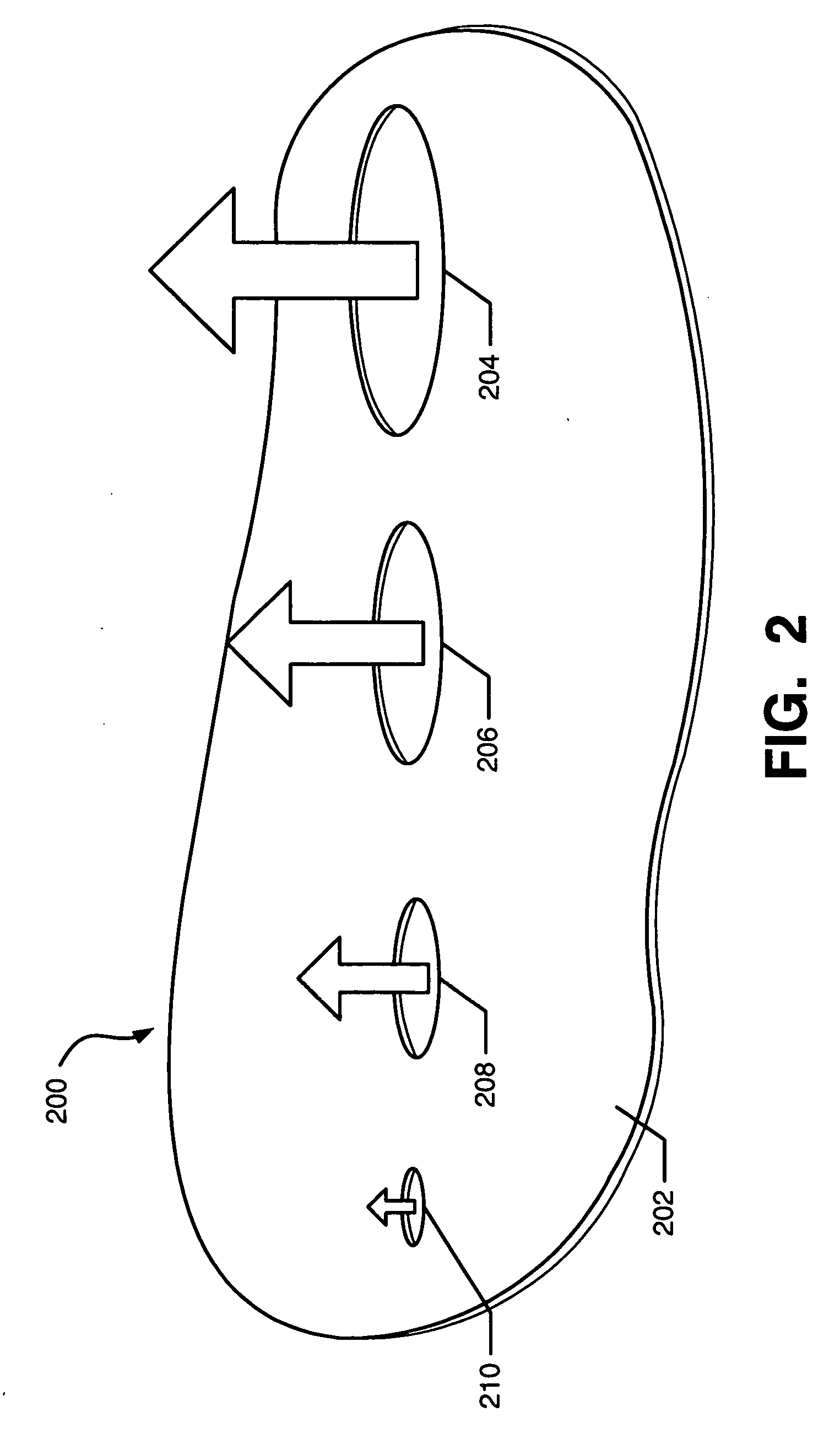Articles of apparel utilizing targeted venting or heat retention zones that may be defined based on thermal profiles
a technology of thermal profiles and venting, applied in the field of apparel, can solve the problems of affecting the cooling effect of sweat provided by the continued evaporation of sweat, affecting the health of people, and affecting the cooling effect of swea
- Summary
- Abstract
- Description
- Claims
- Application Information
AI Technical Summary
Benefits of technology
Problems solved by technology
Method used
Image
Examples
Embodiment Construction
[0030] Various specific examples of the invention are described in detail below in conjunction with the attached drawings.
A. General Description of Aspects of the Invention
[0031] In general, aspects of this invention relate to garments having targeted vent zones or zones of increased insulation or heat retention capability at specific locations of the garment structure to improve cooling or heat retention efficiency and effectiveness and thereby, in at least some instances, increase the wearer's comfort level and / or improve his or her performance.
[0032] Garments in accordance with at least some examples of this invention may include: (a) a garment structure for at least a portion of an upper torso, wherein the garment structure includes at least a first fabric panel; and (b) a pattern of openings defined in the garment structure. The pattern of openings, in at least some example garments according to this invention, may include: (i) plural openings of a first size or larger prov...
PUM
 Login to View More
Login to View More Abstract
Description
Claims
Application Information
 Login to View More
Login to View More - R&D
- Intellectual Property
- Life Sciences
- Materials
- Tech Scout
- Unparalleled Data Quality
- Higher Quality Content
- 60% Fewer Hallucinations
Browse by: Latest US Patents, China's latest patents, Technical Efficacy Thesaurus, Application Domain, Technology Topic, Popular Technical Reports.
© 2025 PatSnap. All rights reserved.Legal|Privacy policy|Modern Slavery Act Transparency Statement|Sitemap|About US| Contact US: help@patsnap.com



